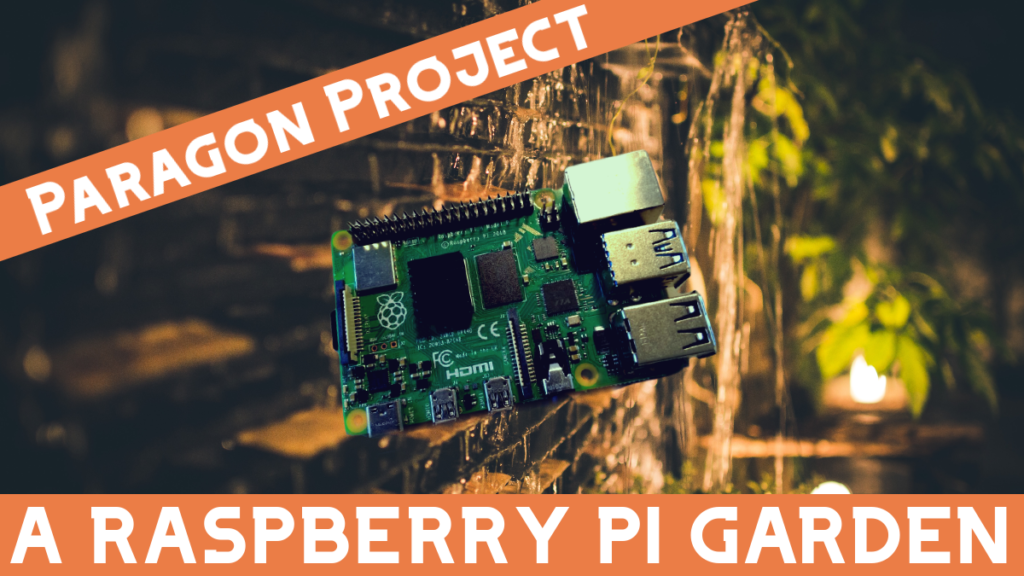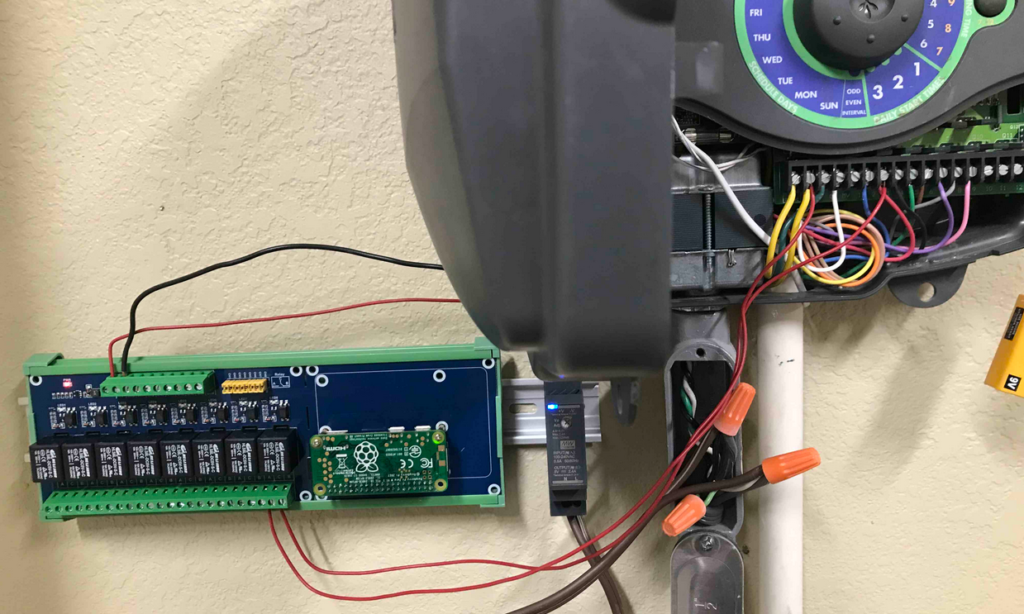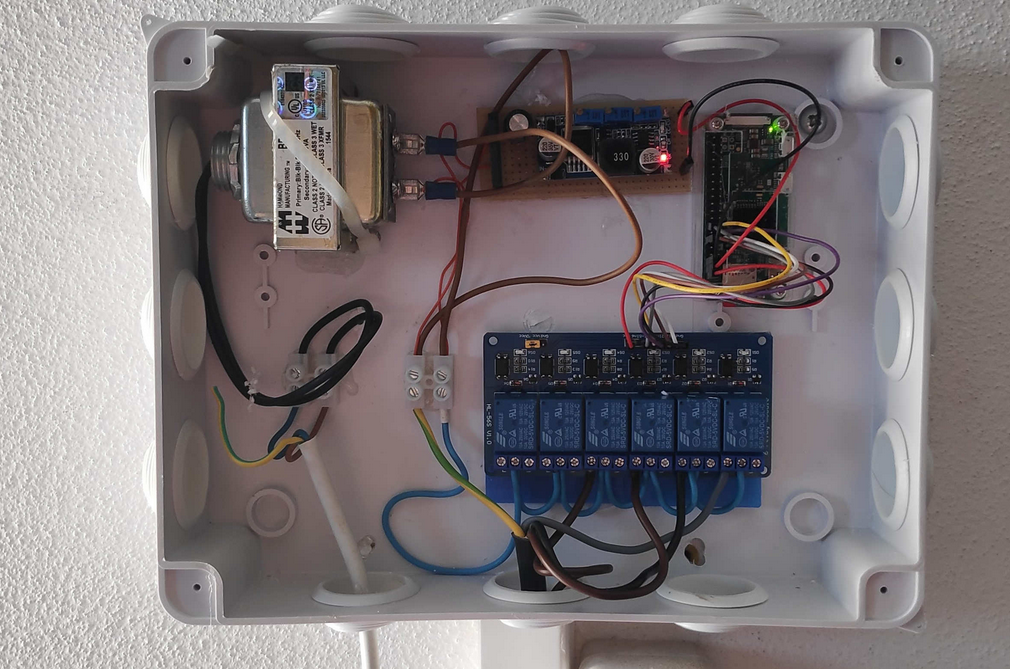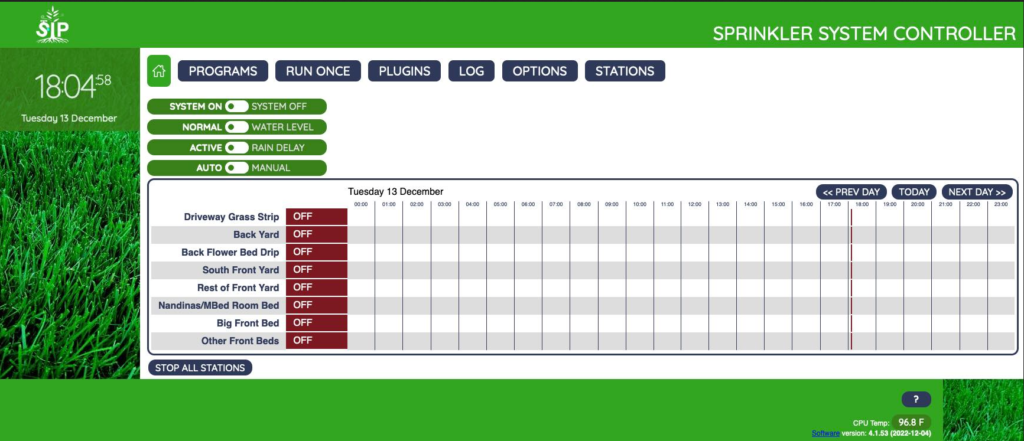Paragon Project: A Raspberry Pi Garden

Do you want to be able to water your garden remotely? Then this is the project for you! It’s an entire irrigation platform that you can control with your phone, tablet, or laptop! Using a Raspberry Pi, your garden comes wholly under your control.
This one comes from Dan-in-CA on GitHub. You can find the GitHub repository here. It’s called “SIP”, as in “sustainable irrigation platform”, and it’s one of the coolest Raspberry Pi projects I have ever seen.

It’s under the GNU General Public License, so it’s fully open-source, fully modifiable. And, best of all, it’s got a really vibrant community contributing to it.
Hardware
This project centers on a Raspberry Pi. You really could use any Pi that has internet access, including Raspberry Pi Zero, as you can see in the photo above.
Although, I don’t think you’d be able to use this setup with a Pico W. I’d be thrilled to be proven wrong!
Indeed, this might be a better project for a Raspberry Pi 3 over a Raspberry 4, for example, because the Raspberry Pi 4 might run too hot depending on your garden setup.
The Raspberry Pi is what will run SIP directly. From there, you’ll want to hook it up to a 4, 6, or 8 channel relay board. The relay board
As one person on the SIP forums wrote, “I used the first 6 relays for the 6 existing stations in my existing irrigation configuration. I used the 7th relay as a Master for the 24VAC common line so that the solenoids are completely isolated from the 24VAC transformer when not activated.”
You could also use a shift register board.

In this setup, for instance, you can see a Raspberry Pi Zero W at the top left, a 6-channel relay board on the bottom, and a 24V AC transformer in the upper left. Additionally, there’s a DC-DC step down converter to convert the output to a lower voltage for the Raspberry Pi and the relay board.
Software
On the software side, SIP essentially runs a local website that you can use to monitor and control your garden. It’s not totally dissimilar to PiCockpit, actually!
But while PiCockpit enables you to control your Raspberry Pi, SIP enables you to control your garden with your Raspberry Pi.
It relies on HTML Get and MQTT as a way for devices to interface.
And since it’s through a web interface, you can easily run SIP in a browser on a phone, laptop, or tablet.

The installation process is also super straightforward.
First, you need to do is flash Raspberry Pi OS Lite onto an SD card. Then you’ll need to install Git and clone the GitHub repository onto the Raspberry Pi. Then you run the sip.py file in the repository and you’re good to go!
You can find detailed instructions on the installation here.
Conclusion
You’re never going to have ask your neighbors again to water your plants while you’re out of town!
I’ve got to give a huge shout out to Dan for putting this project together, uploading it for everyone, and really building a global community around the Sustainable Irrigation Platform.
And, once you’ve got this all up, you can also join the SIP forums and stay up-to-date with the community! Members ask questions, share their ideas, and upload pictures of their SIP builds.
If you want to find more details on the code, head over on the GitHub repository, which has all the code and documentation for the project.
In the meantime, be sure to check out more Paragon Projects here!
How would you set this up? Which plants do you have in your garden?
Comment below!
OBSERVATION: I see that it’s all in a plastic case, but technically those Hammond transformers are only supposed to be used in metal boxes, so that the incoming 120VAC ground conductor can also be grounded. I think it’s probably this one:
https://www.hammfg.com/files/parts/pdf/BD2G.pdf
Otherwise, if the transformer has an external or internal short, it could become energized (including while the cover is open and able to be physically touched = SHOCK), or with partial/intermittent contact it could continue to spark and start a fire.
SUGESTION: Very improbable event to short out, but safety ground conductors exist for a reason and should be used. If people don’t want to, that’s a poor choice. But it’s best that they be shown the correct way in the first place.
COMMENDATION: Otherwise, nice work on this project!
Thanks for the comment!
Gran desperdicio de recursos para algo tan básico, con una raspberry y un sonoff 4ch puedes controlar eso desde una plataforma domótica completa como es home assistant.
That’s why a lot of people use Raspberry Pi Zero W for their SIPs.